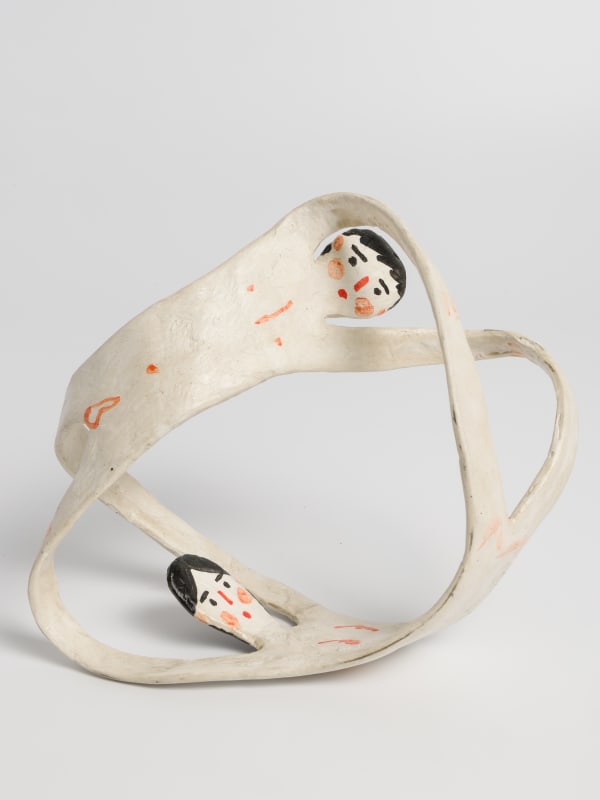Working across painting and sculpture, Masao Nakahara’s four-decade practice unfolds as a sincere and poetic meditation on mortality, memory, and the quiet transitions between life and the afterlife. Rather than following a linear timeline, his paintings often blend childhood recollections with present-day imagery, creating a form of estranged yet tender visual poetry. He situates his innocent, ageless figures within hazy dreamscapes, drifting downstream by paddleboat, gazing out to sea, embracing in their homes, or resting in the fields.
Nakahara’s painting is influenced by both his upbringing in Japan and his life in Germany, having moved to Düsseldorf in the early 1980’s. He draws heavily from both Japanese and German cultural histories, layering myth, folklore, and personal symbolism. His early references were Fauvist Georges Rouault’s feverish, impasto style of figurative painting, and the hushed cityscapes of Impressionist painter Maurice Utrillo. His current painting is equally influenced by Japanese figurative painter Sekine Shōji, his long-time friend and peer Yoshitomo Nara, as well as European Expressionist painters such as Ernst Ludwig Kirchner, Willem de Kooning, and Edvard Munch.
Central to Nakahara’s imagery is the theme of impermanence, informed by the Japanese concept of mono no aware (物の哀れ), a notion of the awareness of the transience of. In his painting, the cherry tree appears frequently as a symbol of life’s blossoming beauty and its inevitable passing. Nakahara reworks traditional Japanese folklore, allowing his works to become quiet, poignant bridges between memory, myth, and the ever-changing nature of existence.
